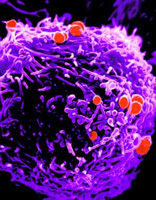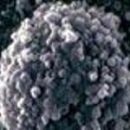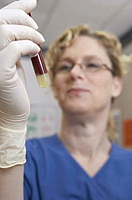What is gonorrhea? As the infection occurs? What will happen if not to treat gonoron? About this and many more details in the article.
Content
Question number 1. What is gonorrhea?
Gonorrhea – This is a venereal disease caused by Gonokokkom (Neisseria Gonorrhoeae). Gonococcus striking the mucous membrane canal, rectum, pharynx, cervix and eyes.
Question # 2. How to infect gonorrhea?
Infection of gonorads in the overwhelming majority occurs when unprotected sex contacts. At the same time, vaginal and anal sexual contacts are characterized by the highest risk of infection. The probability of infection with a single vaginal or anal contact with sick gonorrhea is 20-50%. With oral sex, the risk of infection is significantly lower.
It is possible to infect a newborn during childbirth.
Domestic infection of gonorads is almost impossible. The fact is that the gonococci die in the external environment very quickly. In addition, it is necessary for infection that a sufficiently large number of gonococcal fell into the body that under everyday infection is unreal.
Question number 3. What incubation period of gonorrhea?
From the moment of infection, the men usually passes 2-5 days; among women – 5-10 day.
Question number 4. How Gonorrhea is manifested?

Men have a discharge (yellowish and white) from the urethra, often in combination with pain when urination. Men very rarely meet asymptomatic flow of gonorrhea (only in 1-5% of cases).
Women have the following complaints (or a combination of them): highlights (yellowish and white) from the vagina, pain when urine, pain at the bottom of the abdomen. At the same time, the female gonorrhea often proceeds in the absence of symptoms (in 20-40% of cases).
With a gonococcal proactive (direct intestine) pain in the rectum, itching and selection from the rectum. However, most often the gococcal proctitis flows asymptomatic.
With gonococcal pharyngitis (throat damage) is possible pain in the throat. However, in the overwhelming majority, it proceeds asymptomatic.
Gonococcal Faringitis and Gonococcal Dimensions are found in both men (mainly homosexual and bisexual orientation) and women.
Question number 5. What will happen if not to treat gonoron?
In the absence of treatment, gonorrhea goes into a chronic stage. At the same time, the symptoms become less pronounced or at all pass. Patients of chronic gonorads can infect their sexual partners.
The development of the following complications is possible:
- Men may have epididimitis (inflammation of the appendage of eggs)
- Women may have inflammation of the uterus and the appendages of the uterus, which are frequent cause of infertility
Question number 6. How to diagnose gonorrhea?
The following laboratory studies are used to diagnose the following laboratory studies: shared smear, seeding, polymerase chain reaction (PCR).
The total smear is characterized by high accuracy only with a sharp gonorome in men.
To diagnose gonorrhea in women, as well as for the diagnosis of gonococcal pharyngitis and proctitis (in men and women), more accurate research methods are needed – Sowing or PCR.









